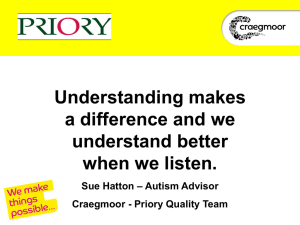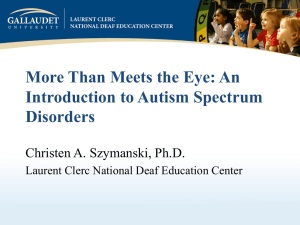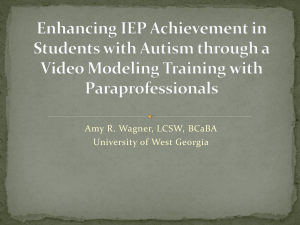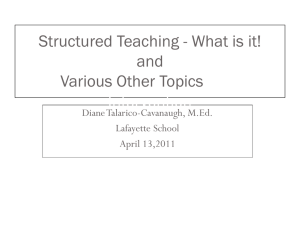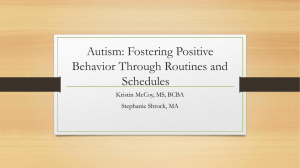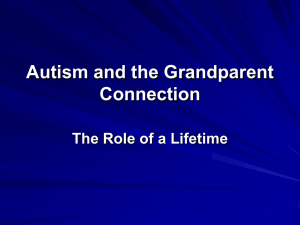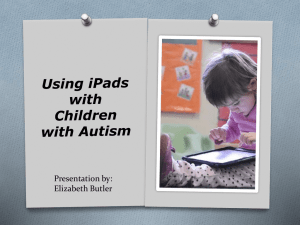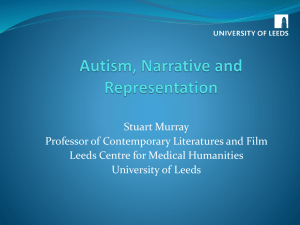Beyond Video Modeling: The Next Generation
advertisement
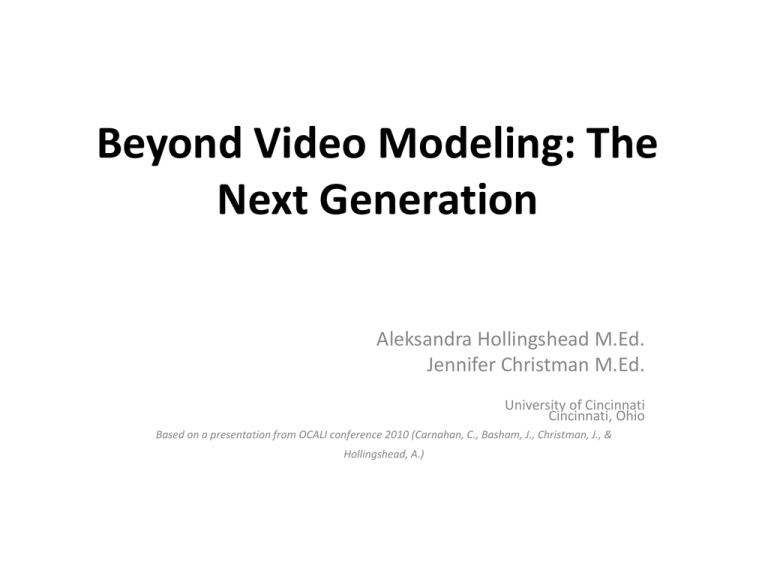
Beyond Video Modeling: The Next Generation Aleksandra Hollingshead M.Ed. Jennifer Christman M.Ed. University of Cincinnati Cincinnati, Ohio Based on a presentation from OCALI conference 2010 (Carnahan, C., Basham, J., Christman, J., & Hollingshead, A.) Purpose 1. Briefly discuss the research supports of video modeling 1. Provide strategies for extending the use of video modeling through new technology 2. Offer practical strategies for using new technologies in educational and employment settings What is video modeling? • Video modeling is a teaching strategy in which a teacher shows a video of desired behaviors or interactions to an individual student or small group of students. • The student imitates the behavior or interaction when in the appropriate situation (Bellini, Akullian, Hopf, 2007). Individual Model Advantages and Disadvantages Advantages: • Aligns to the needs of students with ASD and other significant disabilities • Individualized instruction • Saves times • Control through editing • Variety of settings Disadvantages: • Requires a certain level of attention • “Attention and motivation are essential to observational learning. If a child does not attend to a model, she will not be able to imitate the model’s behavior” (Bellini S., Akullian J. 2007) Considerations • Research supports the use of video modeling in: • Academic skills (e.g., math) • Language development • Life skills and social behavior (Buggey, 2005) • Video modeling and video self-modeling are both effective means of providing a visual representation of a desired behavior or skill (Sherer et al., 2001). • Self • Other • Peer • adult Implementation Steps for Video Modeling 1. Identify target behavior 2. Obtain necessary permission 3. Interview parents and observe the child 4. Select and train models 5. Prepare equipment and setting 6. Record target behavior 7. Edit the video 8. Collect baseline data 9. Show the video clip of desired behavior 10. Collect intervention data and graph data 11. Promote maintenance and generalization (Banda, Matuszny, Turkan, 2007) Guidelines • Create a detailed task analysis individualized to student's needs • Keep it short! • Initially use in one environment, later add a variety to ensure generalization • Show close-up of the desired action – Make sure it’s a clear video Not so clear… Guidelines cont. • Following video watching allow sufficient time to demonstrate the behavior • Show the video again if the student fails to demonstrate the behavior • Keep the data! • Program for maintenance across settings, people, and time As it stands, what are the problems? • Stationary • Learners view appropriate social interactions in one room and then were required to go to another room to play and demonstrate the skill of the video (Nikopoulus, Kennan, 2004). • With advances in technology, video modeling can become more efficient and effective in addressing the needs of diverse students (Nikopoulos, Kennan, 2007). The need for portability… New Technology • Mobile technology – iPod – iPhone – iPad – Blackberry – Flip Camera – PDA – Laptop Moving to mobile technology • Ease of… – – – – – Editing digital video clips Start/stop/restart Touch screen availability Social acceptance of iPod and ear buds Video at home, school, work, public transportation • Transitioning to audio only – Hearing prompts through ear bud – Start and stop on ear bud Available Apps and Web Resources For more resources see the video modeling apps and resources handout Video Modeling to Support Independent Work Skills Video Model to Support Transitions Video Model Paired with Prompts to Support Life Skills Bibliography • • • • • • Banda, D., Matuszny, R., Turkan, S. (2007). Video Modeling Strategies to Enhance Appropriate Behaviors in Children with Autism Spectrum Disorders. Teaching Exceptional Children, 39 (6), 47-52. Bellini, S., Akullian, J. & Hopf, A. (2007). Increasing Social Engagement in Young Children with Autism Spectrum Disorders Using Video Self-Modeling. School Psychology Review, 36(1), 80-90. Buggey, T. (2005). Video Self-Modeling Applications With Students With Autism Spectrum Disorder in a Small Private School Setting. Focus on Autism and Other Developmental Disabilities, 20(1), 52-63. Nikopoulos, C. & Keenan, M. (2004). Effects of Video Modeling on Social Initiations by Children With Autism. Journal of Applied Behavior Analysis, 37(1), 93-96. Nikopoulos, C.K. & Keenan, M. (2007). Using Video Modeling to Teach Complex Social Sequences to Children with Autism. Journal of Autism and Developmental Disorders, 37(1), 678-693. Sherer, M., Pierce, K., Paredes, S., Kisacky, K., Ingersoll, B. & Schreibman, L. (2001). Enhancing Conversation Skills in Children with Autism via Video Technology; Which is Better, “Self” or “Other” as a Model?. Behavior Modification, 25(1), 140-158.




